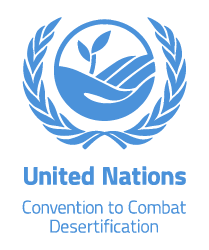Location
The United Nations Convention to Combat Desertification in Those Countries Experiencing Serious Drought and/or Desertification, Particularly in Africa (UNCCD) is a Convention to combat desertification and mitigate the effects of drought through national action programs that incorporate long-term strategies supported by international cooperation and partnership arrangements.
Members:
Resources
Displaying 86 - 90 of 585Land Degradation Neutrality in Small Island Developing States. Briefing Note
Many Small Island Developing States (SIDS) have committed to establishing national voluntary LDN targets. By establishing LDN targets, SIDS have defined their ambitions and key priorities to address land degradation. The LDN target setting process allowed national stakeholders to systematically analyze the causes and effects of land degradation and to come up with evidence-based decisions on what is desirable and feasible to avoid, reduce or reverse land degradation by 2030.
Land Degradation Neutrality in Small Island Developing States. Technical report
Small Island Developing States (SIDS) are continuously under the threat from the adverse effects of climate change and land degradation impacts. Erratic climatic patterns have made daily weather previsions unreliable and are becoming a challenge for communities to take appropriate timely and preventive measures. Land degradation directly increases CO2 emissions, contributing to climate change and vice versa.
Land Degradation Neutrality in Small Island Developing States. Briefing Note
Many Small Island Developing States (SIDS) have committed to establishing national voluntary LDN targets. By establishing LDN targets, SIDS have defined their ambitions and key priorities to address land degradation. The LDN target setting process allowed national stakeholders to systematically analyze the causes and effects of land degradation and to come up with evidence-based decisions on what is desirable and feasible to avoid, reduce or reverse land degradation by 2030.
Nature Risk Rising: Why the Crisis Engulfing Nature Matters for Business and the Economy
Nature loss is a planetary emergency. Humanity has already wiped out 83% of wild mammals and half of all plants and severely altered three-quarters of ice-free land and two-thirds of marine environments. One million species are at risk of extinction in the coming decades – a rate tens to hundreds of times higher than the average over the past 10 million years. The World Economic Forum’s 2020 Global Risks Report ranks biodiversity loss and ecosystem collapse as one of the top five threats humanity will face in the next ten years.
Reversing Land Degradation in Drylands: The Case for Farmer Managed Natural Regeneration (FMNR) in the Upper West Region of Ghana.
The Lawra district of the Upper West region was selected as the case study. This study compared crop yields for FMNR and non-FMNR farmers. FMNR farmers are classified as having at least 8 trees per acre, with an average of 13 trees per acre (33 per ha) and a maximum of 40. Non-FMNR farmers are classified as having between 1 and 7 trees per acre, with an average of 5.Qualitative (focus group discussion) and quantitative (household survey) data were collected in April to May 2019. Over 500 households were interviewed in both CIKOD intervention communities and control sites.


